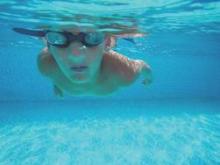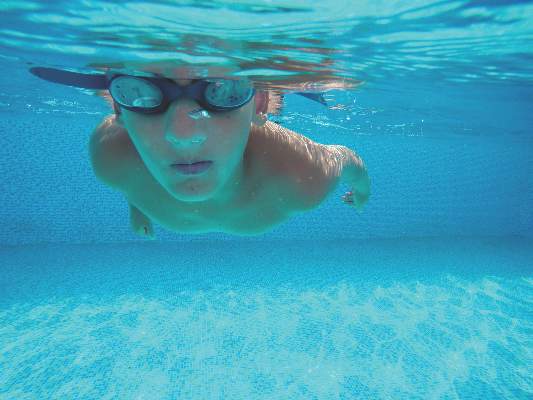User login
The more students exercised, the less likely they were to feel sad or suicidal, particularly if they were the victims of bullies, analysis of a population health survey has shown.
“[Our] data demonstrate that being physically active on 4 or more days per week was related to an approximate 23% reduction in the odds of both suicidal ideation and suicide attempt in bullied adolescents,” wrote Jeremy Sibold, Ed.D., associate professor of rehabilitation and movement science at the University of Vermont, Burlington, and his colleagues.
They analyzed data on 13,583 youths who participated in the 2013 National Youth Risk Behavior Survey (J Am Acad Child Adolesc Psychiatry. 2015 doi: 10.1016/j.jaac.2015.06.019).
The investigators found that 30% of respondents reported feeling sad for at least 2 weeks in the past 12 months, and 22% and 8% reported suicidal ideation or a suicide attempt, respectively (P less than .0001).
Over a quarter of all students reported they had been bullied in the past 12 months. Over half of these respondents reported that they felt sad as a result, with 39% of this group reporting they had suicidal thoughts and 18% reporting an attempted suicide.
Twenty-three percent of respondents reported feeling sad but had not been bullied. Of these, 14% reported suicidal ideation, with 5% having attempted suicide, Dr. Sibold and his associates reported.
Thirty-seven percent of bullied students who exercised 6-7 days per week reported suicidal ideation, compared with 46% of bullied students who exercised 0-1 day a week. Twelve percent of nonbullied students who exercised 6-7 days a week reported suicidal ideation, compared with 21% of nonbullied students who exercised 0-1 day. In addition, 16% of bullied students who exercised 6-7 days a week reported a suicide attempt, compared with 20% who exercised only 0-1 days. In nonbullied students who exercised 6-7 days per week, 4% reported a suicide attempt, versus 6% who exercised 0-1 day.
Students who were bullied and exercised 6-7 days a week had lower odds of suicidal ideation (adjusted odds ratio, 0.77), compared with bullied students who exercised 0-1 day a week. Bullied students who exercised 6-7 days had lower odds of suicide attempt (adjusted odds ratio, 0.81) than bullied students who exercised 0-1 day.
One of Dr. Sibold’s associates has received grant or research support from the National Institutes of Health, the National Institute of Mental Health, the National Institute of Diabetes and Digestive and Kidney Disease, and the state of Vermont. The other investigators reported no biomedical financial interests or potential conflicts of interest.
On Twitter @whitneymcknight
The more students exercised, the less likely they were to feel sad or suicidal, particularly if they were the victims of bullies, analysis of a population health survey has shown.
“[Our] data demonstrate that being physically active on 4 or more days per week was related to an approximate 23% reduction in the odds of both suicidal ideation and suicide attempt in bullied adolescents,” wrote Jeremy Sibold, Ed.D., associate professor of rehabilitation and movement science at the University of Vermont, Burlington, and his colleagues.
They analyzed data on 13,583 youths who participated in the 2013 National Youth Risk Behavior Survey (J Am Acad Child Adolesc Psychiatry. 2015 doi: 10.1016/j.jaac.2015.06.019).
The investigators found that 30% of respondents reported feeling sad for at least 2 weeks in the past 12 months, and 22% and 8% reported suicidal ideation or a suicide attempt, respectively (P less than .0001).
Over a quarter of all students reported they had been bullied in the past 12 months. Over half of these respondents reported that they felt sad as a result, with 39% of this group reporting they had suicidal thoughts and 18% reporting an attempted suicide.
Twenty-three percent of respondents reported feeling sad but had not been bullied. Of these, 14% reported suicidal ideation, with 5% having attempted suicide, Dr. Sibold and his associates reported.
Thirty-seven percent of bullied students who exercised 6-7 days per week reported suicidal ideation, compared with 46% of bullied students who exercised 0-1 day a week. Twelve percent of nonbullied students who exercised 6-7 days a week reported suicidal ideation, compared with 21% of nonbullied students who exercised 0-1 day. In addition, 16% of bullied students who exercised 6-7 days a week reported a suicide attempt, compared with 20% who exercised only 0-1 days. In nonbullied students who exercised 6-7 days per week, 4% reported a suicide attempt, versus 6% who exercised 0-1 day.
Students who were bullied and exercised 6-7 days a week had lower odds of suicidal ideation (adjusted odds ratio, 0.77), compared with bullied students who exercised 0-1 day a week. Bullied students who exercised 6-7 days had lower odds of suicide attempt (adjusted odds ratio, 0.81) than bullied students who exercised 0-1 day.
One of Dr. Sibold’s associates has received grant or research support from the National Institutes of Health, the National Institute of Mental Health, the National Institute of Diabetes and Digestive and Kidney Disease, and the state of Vermont. The other investigators reported no biomedical financial interests or potential conflicts of interest.
On Twitter @whitneymcknight
The more students exercised, the less likely they were to feel sad or suicidal, particularly if they were the victims of bullies, analysis of a population health survey has shown.
“[Our] data demonstrate that being physically active on 4 or more days per week was related to an approximate 23% reduction in the odds of both suicidal ideation and suicide attempt in bullied adolescents,” wrote Jeremy Sibold, Ed.D., associate professor of rehabilitation and movement science at the University of Vermont, Burlington, and his colleagues.
They analyzed data on 13,583 youths who participated in the 2013 National Youth Risk Behavior Survey (J Am Acad Child Adolesc Psychiatry. 2015 doi: 10.1016/j.jaac.2015.06.019).
The investigators found that 30% of respondents reported feeling sad for at least 2 weeks in the past 12 months, and 22% and 8% reported suicidal ideation or a suicide attempt, respectively (P less than .0001).
Over a quarter of all students reported they had been bullied in the past 12 months. Over half of these respondents reported that they felt sad as a result, with 39% of this group reporting they had suicidal thoughts and 18% reporting an attempted suicide.
Twenty-three percent of respondents reported feeling sad but had not been bullied. Of these, 14% reported suicidal ideation, with 5% having attempted suicide, Dr. Sibold and his associates reported.
Thirty-seven percent of bullied students who exercised 6-7 days per week reported suicidal ideation, compared with 46% of bullied students who exercised 0-1 day a week. Twelve percent of nonbullied students who exercised 6-7 days a week reported suicidal ideation, compared with 21% of nonbullied students who exercised 0-1 day. In addition, 16% of bullied students who exercised 6-7 days a week reported a suicide attempt, compared with 20% who exercised only 0-1 days. In nonbullied students who exercised 6-7 days per week, 4% reported a suicide attempt, versus 6% who exercised 0-1 day.
Students who were bullied and exercised 6-7 days a week had lower odds of suicidal ideation (adjusted odds ratio, 0.77), compared with bullied students who exercised 0-1 day a week. Bullied students who exercised 6-7 days had lower odds of suicide attempt (adjusted odds ratio, 0.81) than bullied students who exercised 0-1 day.
One of Dr. Sibold’s associates has received grant or research support from the National Institutes of Health, the National Institute of Mental Health, the National Institute of Diabetes and Digestive and Kidney Disease, and the state of Vermont. The other investigators reported no biomedical financial interests or potential conflicts of interest.
On Twitter @whitneymcknight
FROM THE JOURNAL OF THE AMERICAN ACADEMY OF CHILD AND ADOLESCENT PSYCHIATRY

